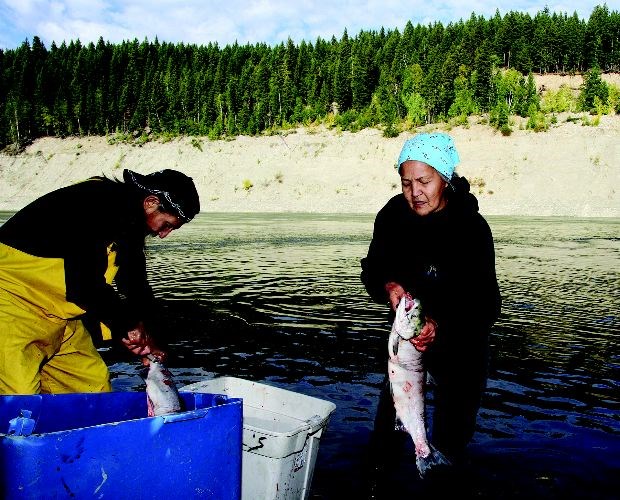Aboriginal fishers are casting a wide net to find salmon answers this year. According to those with nets in the water in designated Lheidli T'enneh First Nation fishing spots, the sockeye numbers are far below normal.
"When the run came through, the brunt of it only lasted a good week or two weeks," said Edie Frederick, the latest in a generational line of local First Nations fishers on the Fraser River. "Usually we can fish from the first week in August right through September. We have a quota, so we have to pull our nets when we reach a certain number. Last year we had to pull our nets with lots of fish still running, but we haven't pulled our nets yet, this year. The fish are in really good condition, they are very healthy, but not high in numbers."
The hypothesis among those in the Lheidli T'enneh fishery is high river levels stymied the sockeyes' advance, especially at turbulent points like Hell's Gate. Frederick said even the ones that arrive in the Upper Fraser are dying before they get far into the spawning grounds.
The federal Department of Fisheries and Oceans (DFO) monitors fish stock levels, but the data isn't ready yet. Officials won't know until about January how the fall salmon run played out.
Anecdotally, said DFO's area director for the B.C. interior Barry Rosenberger, the Hell's Gate idea isn't true - anymore.
"The return of the early Stuart salmon - the ones that came up in late June early July - those fish experienced some of the highest flows on record. We do have that data emerging," Rosenberger said. "We expect it will tell us that three out of four did not make it to spawning grounds."
However, the waters receded by the time the spring freshette washed downriver. He said "The late Stuart and Stellako runs came through when the flows and water temperatures were close to normal."
If these runs are small, he said, the answers are still mysteries.
So, too, is where many Lheidli T'enneh people - for millennia a fish-focused culture - will get their winter food. Lheidli fishers are not allowed to draw fish from the early Stuart run, so their only sustenance comes from the fish swimming upstream now.
"I fill up my freezer, I like to smoke a lot, and can a lot," Frederick said. "We have an extended family that depends on that for winter food. We'll keep going as long as we can, until they tell us to stop. But our freezer is only three quarters full and we've had to put in two nets. Usually we only need one. We've had to work with a second family for that because the rule is only one net per family is allowed."
All Lheidli people are permitted to fish the Fraser during the designated period. At most, only five nets are ever in the water, though, said Frederick.
"Most of the Lheidli people do not have a boat, not everyone has a vehicle, it is hard for them to fish, so I do my best to provide what I can," she said.
Even other First Nations around the region will turn to her and the other local fishers for a salmon supply, often trading for wild game and other items to ensure everyone has variety in their diet.
One benefit to the downturn in salmon, Frederick said, was she and husband Robert Frederick have been able to spend more time at their fishing site with their teenaged family members, who have pitched in to help. "I'm just so proud of them," she said.
The Lheidli T'enneh have a national fishing program, but staff there did not provide comments to our inquiries.



